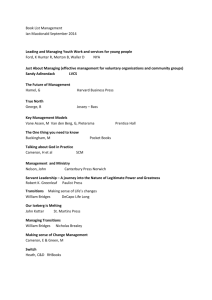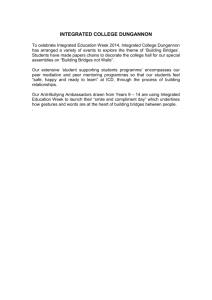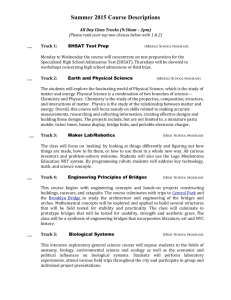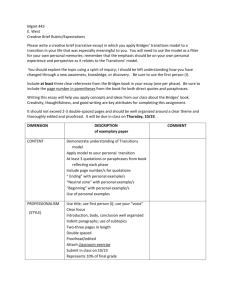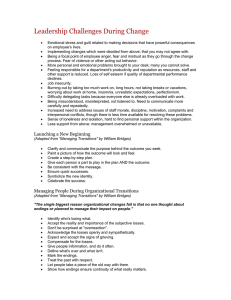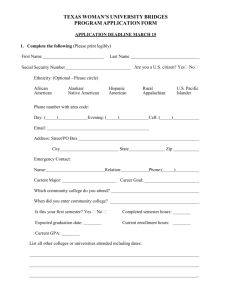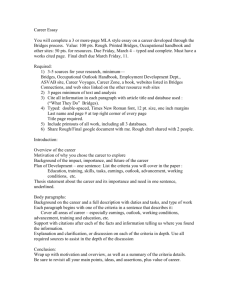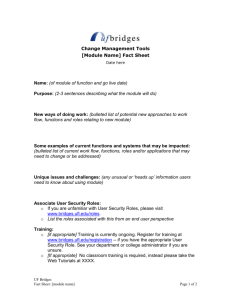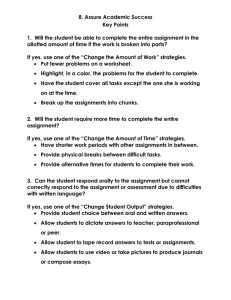Transitions, Bill Bridges
advertisement
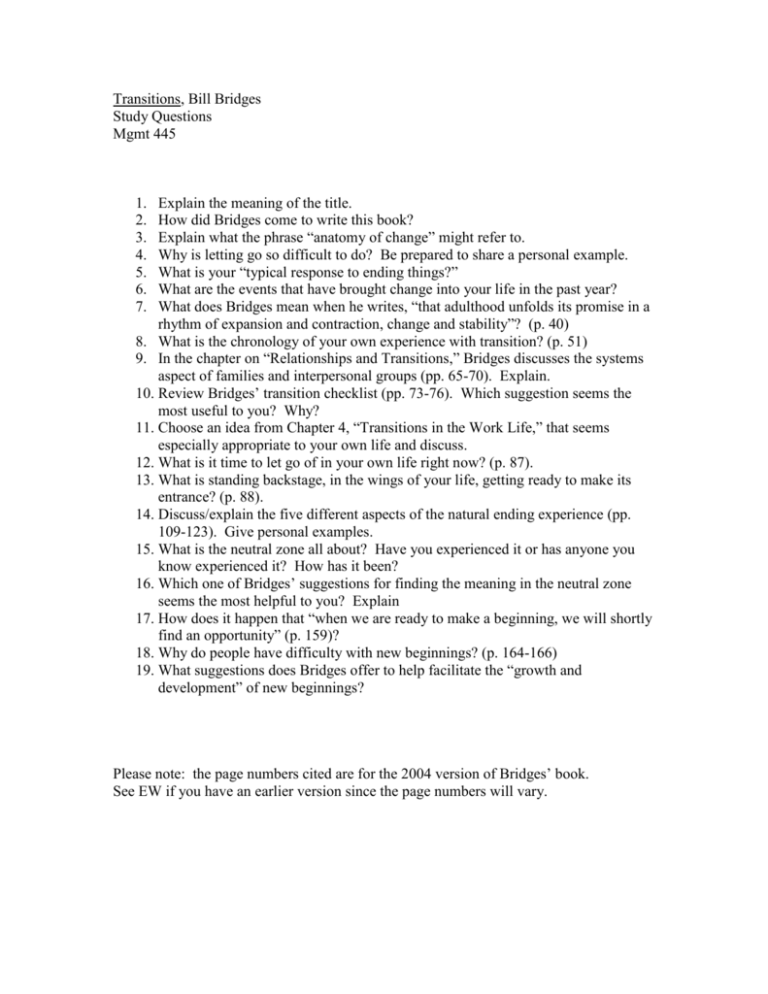
Transitions, Bill Bridges Study Questions Mgmt 445 1. 2. 3. 4. 5. 6. 7. Explain the meaning of the title. How did Bridges come to write this book? Explain what the phrase “anatomy of change” might refer to. Why is letting go so difficult to do? Be prepared to share a personal example. What is your “typical response to ending things?” What are the events that have brought change into your life in the past year? What does Bridges mean when he writes, “that adulthood unfolds its promise in a rhythm of expansion and contraction, change and stability”? (p. 40) 8. What is the chronology of your own experience with transition? (p. 51) 9. In the chapter on “Relationships and Transitions,” Bridges discusses the systems aspect of families and interpersonal groups (pp. 65-70). Explain. 10. Review Bridges’ transition checklist (pp. 73-76). Which suggestion seems the most useful to you? Why? 11. Choose an idea from Chapter 4, “Transitions in the Work Life,” that seems especially appropriate to your own life and discuss. 12. What is it time to let go of in your own life right now? (p. 87). 13. What is standing backstage, in the wings of your life, getting ready to make its entrance? (p. 88). 14. Discuss/explain the five different aspects of the natural ending experience (pp. 109-123). Give personal examples. 15. What is the neutral zone all about? Have you experienced it or has anyone you know experienced it? How has it been? 16. Which one of Bridges’ suggestions for finding the meaning in the neutral zone seems the most helpful to you? Explain 17. How does it happen that “when we are ready to make a beginning, we will shortly find an opportunity” (p. 159)? 18. Why do people have difficulty with new beginnings? (p. 164-166) 19. What suggestions does Bridges offer to help facilitate the “growth and development” of new beginnings? Please note: the page numbers cited are for the 2004 version of Bridges’ book. See EW if you have an earlier version since the page numbers will vary.

